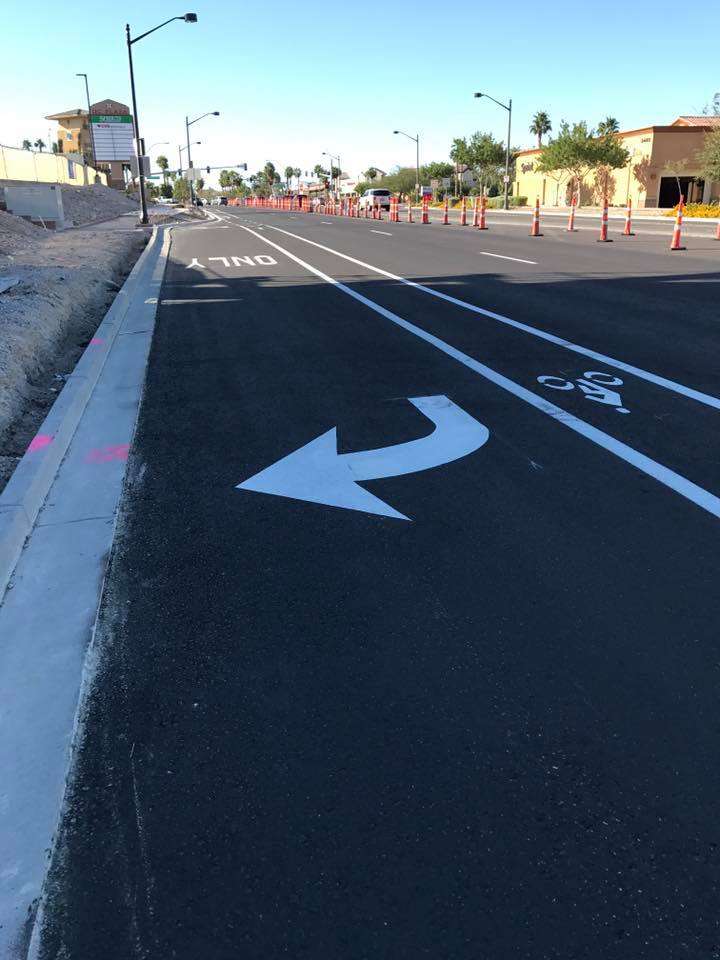
What Is Your Pavement Telling You?
 Asphalt is a remarkably durable paving material. When properly installed and maintained, asphalt pavement can provide many years of service. Occasionally, however, problems can develop, sometimes within a relative short time after installation. If you know how to “read” the warning signs, though, you can often take corrective actions before more extensive damage is done.
Asphalt is a remarkably durable paving material. When properly installed and maintained, asphalt pavement can provide many years of service. Occasionally, however, problems can develop, sometimes within a relative short time after installation. If you know how to “read” the warning signs, though, you can often take corrective actions before more extensive damage is done.
• Do you see signs that traffic is pumping mud or water to the surface? If so, this is a good indication that water is penetrating beneath the pavement. Water penetration can deteriorate the pavement’s foundation, allowing cracks and potholes to form. The entry point for the water must be located and repaired, and if the foundation has already been destabilized, you might need to have it rebuilt.
• Are there wavy patterns in the asphalt where vehicles frequently stop or start? This is referred to as corrugation, shoving or wash-boarding. It is often an indication of a defect in the material, such as too much asphalt cement or too little aggregate added to the mix. Corrective steps depend primarily on the extent of the damages.
• Can you see shiny, smooth areas of asphalt in the path of traffic? This could be flushing. Because flushing is caused by mixing in too much asphalt cement when installing the asphalt, flushing and corrugation are sometimes found together. Flushing may require removal of the defective asphalt and replacing it.
• Are there waves in the asphalt that follow the path of traffic? This is called rutting. Rutting should not be confused with corrugation; the location and extent of the wavy pattern can help you determine which issue is present. Rutting is normally an indication that the installation or design was flawed and insufficient to support the traffic load that the pavement receives. Rutting can pose a driving hazard; water collecting in the ruts increases the chances of hydroplaning, and the jarring that cars can receive when they hit ruts can affect their direction. Solutions vary by situation.
• Can you see tears or wrinkles in the pavement? This could indicate that the bond between the pavement and its supporting foundation has failed. Symptoms usually appear during the first year of the pavement’s life. Most bond failures are the result of improper installation, but since they can also be caused by underlying structural issues, your contractor will need to evaluate your site to determine the proper actions to correct the problem.
• Are there cracks in the asphalt that resemble the skin on the back of an alligator or crocodile? This is called alligatoring or alligator cracking, and it occurs when the asphalt is allowed to bend excessively due to a lack of structural strength. It can indicate that the asphalt layer is too thin, but more often, alligator cracking is caused by inadequate compaction or water penetration that has damaged the foundation. If the foundation has been damaged, it may be necessary to remove the existing pavement and repair the foundation before repaving. Other methods may be sufficient if the alligatoring resulted from different causes.
If you notice any of these signs, your first step should be to ask a professional asphalt contractor to evaluate your pavement. Contractors have many tools in their toolkits that they can use to solve your problem. Two methods that are frequently used for the issues described are overlays and a technique called cut-and-patch. An overlay is an additional layer of asphalt that is applied to your existing pavement. Cut-and-patch is fairly self-explanatory; damaged asphalt is cut out and the area is patched with new asphalt.
Affordable Striping & Sealing provides quality asphalt-related services to customers in the greater Las Vegas area. We are a locally owned company, dedicated to offering outstanding customer service and affordable prices. Our crews have extensive experience in all phases of asphalt maintenance and repair, including sealcoating, parking lot striping and repairing asphalt. Call 702-222-9009 to request a free estimate, or submit our online form.



